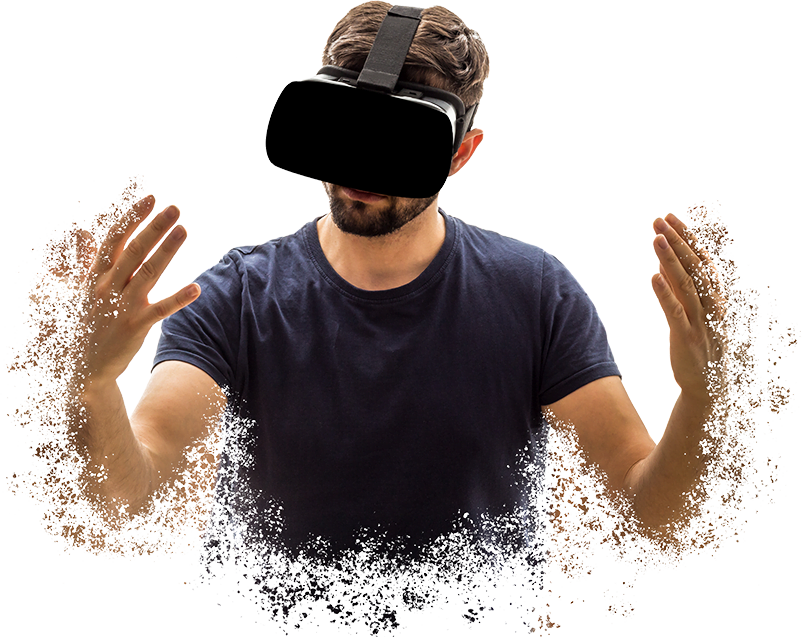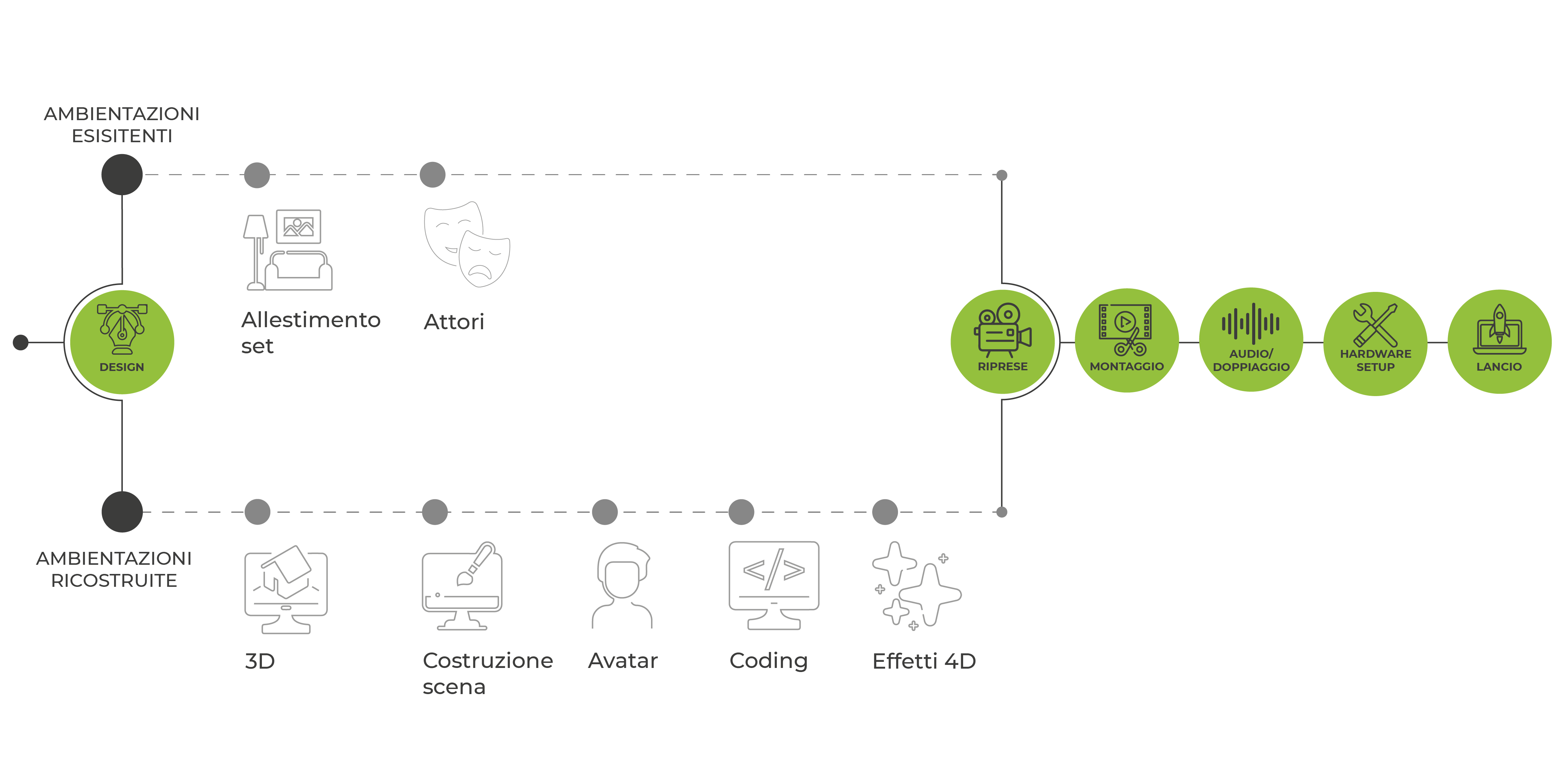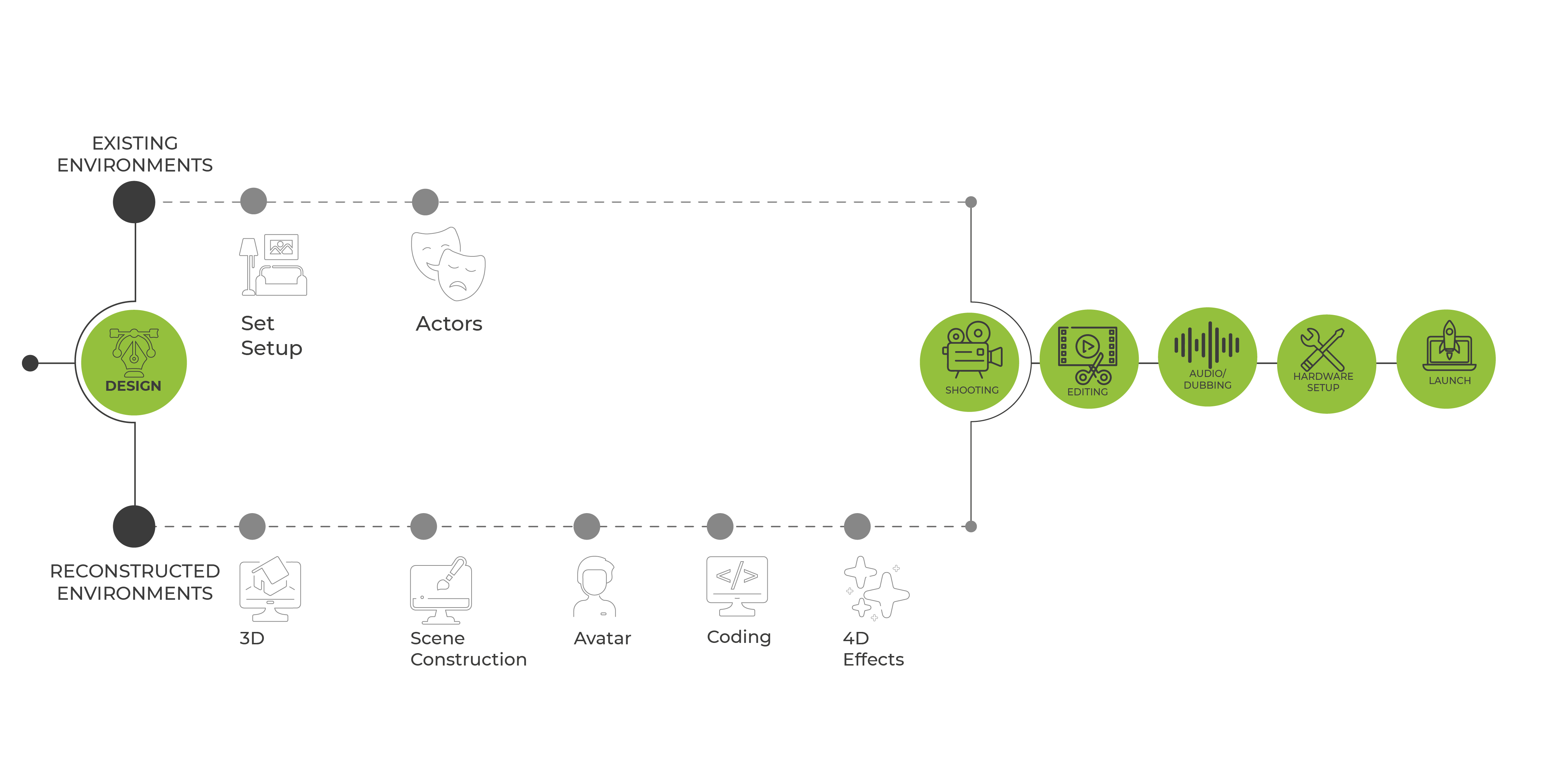VR Storytelling
What is
VR Storytelling

Immersive storytelling: Terms and Concepts
Key Areas of Application

Marketing
It can be used for entertainment, education, or brand awareness.

Industries
Companies use tours to showcase their facilities and production processes to customers or visitors.

Education
It enables students to learn on their terms, increasing motivation and memory recall.

Museums and Tour Operators
It opens up visitation opportunities, enriching the available content with effective and memorable experiences for visitors
Types of Storytelling: Real or Virtual




Case Study: Gragnano Experience
The storytelling retraces the history of Gragnano pasta through a reconstruction of the main events and places that have shaped the history of this world-famous product. The experience is designed to be enjoyed in groups (25 people), each equipped with their Oculus Go headset, synchronized. The installation was carried out in a newly built pasta factory within a multimedia museum tour. The playback room was equipped with 4D effects such as wind and radiant heat, synchronized with the video track through a microcontroller-based system managed by proprietary software.
